Bagan, formerly known as 'Pagan' was the capital of the present day Myanmar in the 9th to 13th. It is located in the Mandalay Region of Myanmar. Of the 10,000 Buddhist temples, pagodas and monasteries that were constructed in the Bagan Plains in the 11th to 13th century, 2,000 still remain. Perhaps this is why the region is so popular with the tourists. Below are a few facts about the city.
- Bagan Archaeological Zone is the main attraction to tourists in the city. It easily rivals Angkor Wat in Cambodia.
- Bagan is fondly known as the 'sea of temples'.
- At least 2200 temples and pagodas can be found in Bagan today, although it is thought more than 10,000 once existed, with each monument dedicated to Buddha. Some of this temples include; Ananda Temple, , Thatbinnyu Temple, Htilominlo Temple, Myinkaba Gubyaukgyi Temple, and Shwezigon Pagoda among many others.
- Bagan has a relatively stable climate that ensures more sunshine than any other Myanmar city.
- Bagan Cuisines are said to be the best in Asia. They combine the exploits of Indian, Chinese, and Thai culinary genius with some of their own to come up with the best food you can taste anywhere in Asia.
- Bagan is a highly religious, historical city located in central Myanmar (Burma) in Southeast Asia, in the region of Mandalay.
- Bagan was the capital of the Pagan Empire (which covered most of modern day Myanmar) until 1297, as well as a centre of Buddhist thought and activity, and it was visited by many scholars from other civilisations.
- The historical record known as the ‘Burmese chronicles’, documented that the Bagan civilisation was established circa 100 AD, although many historians refute this source and rather cite 800 AD as the founding century, as evidence for a kingdom prior to this time is scarce.
- Bagan’s collapse occurred in 1287 AD, after Mongols invaded the Kingdom of Pagan for political reasons, which resulted in a drastic decrease of the number of residents living in the city.
- Although walking the narrow streets among the temples and pagodas is the best way to see the city of temples, there are hot air balloon rides that will make the rides in any other city you know look like child play. The city is best photographed from hot air balloon.
Here are some of the most popular temples:
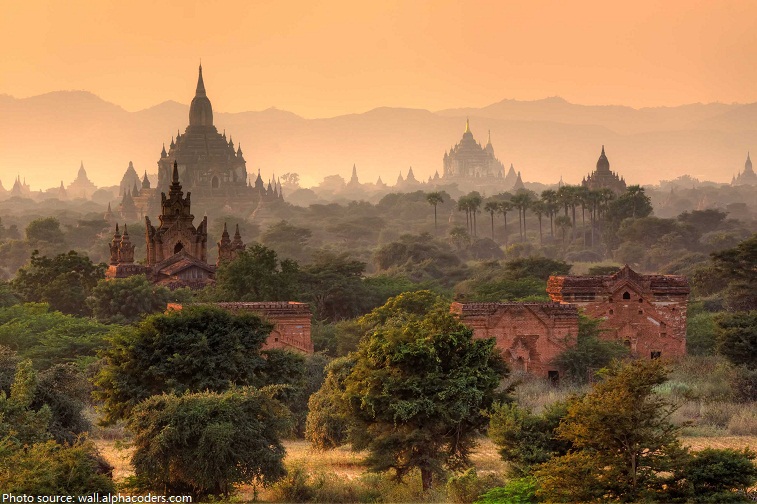
The Ananda Temple, Bagan’s holiest temple was built in 1105 AD during the reign (1084–1113) of King Kyanzittha of the Pagan Dynasty. The temple layout is in a cruciform with several terraces leading to a small pagoda at the top covered by an umbrella known as hti, which is the name of the umbrella or top ornament found in almost all pagodas in Myanmar. The Buddhist temple houses four standing Buddhas, each one facing the cardinal direction of East, North, West and South.
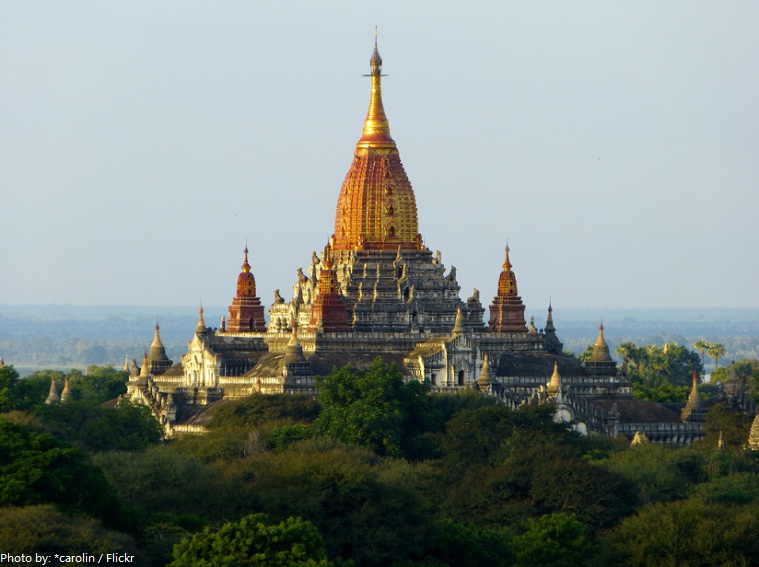
Gawdawpalin Temple was built in the 12th century by King Narapatisithu.It is is the second tallest temple in Bagan. The temple was heavily damaged during the 1975 earthquake and was reconstructed in following years
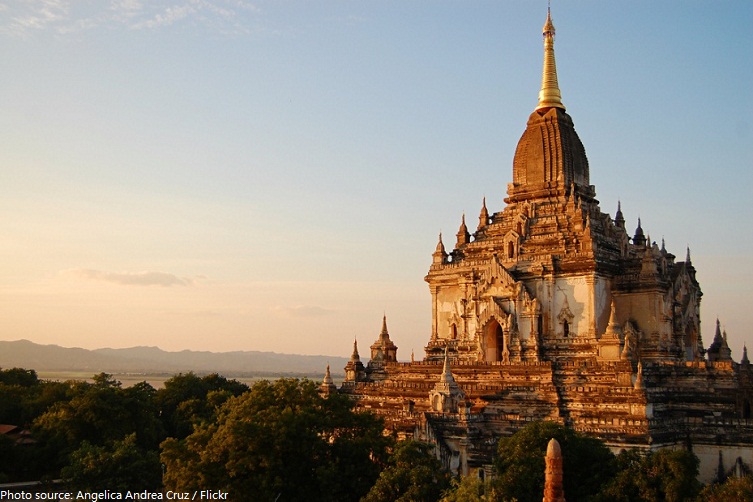
Dhammayangyi Temple is the largest temple in Bagan, it was built by King Narathu who reigned from 1167 to 1170. Narathu, who came to the throne by assassinating his father Alaungsithu and his elder brother, presumably built this largest temple to atone for his sins.
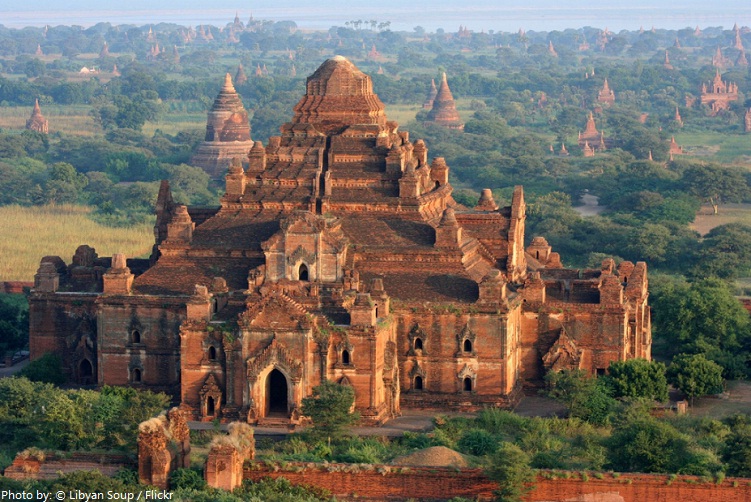
The Shwesandaw Pagoda was built in 1057 by King Anawahta, the stupa enshrines hairs of the Buddha. It is sometimes called the Ganesh Temple after the elephant headed Hindu god whose images once stood at corners of each of the five terraces.
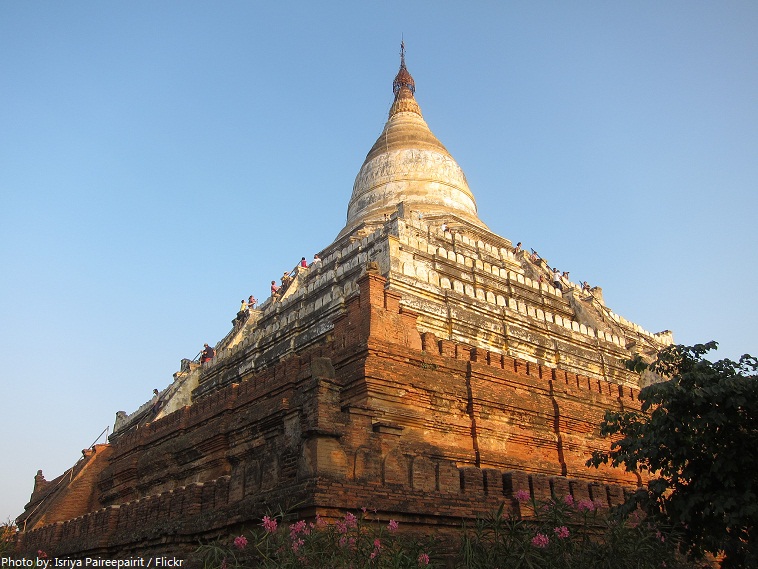
Mahabodhi Temple is an exact, though smaller, replica of the famous Mahabodhi Temple in Bodh Gaya, India (where the Buddha attained enlightenment beneath the Bodhi tree). It was built during the reign of King Nantaungmya (1210-1234) and is completely covered with niches containing seated Buddha figures.
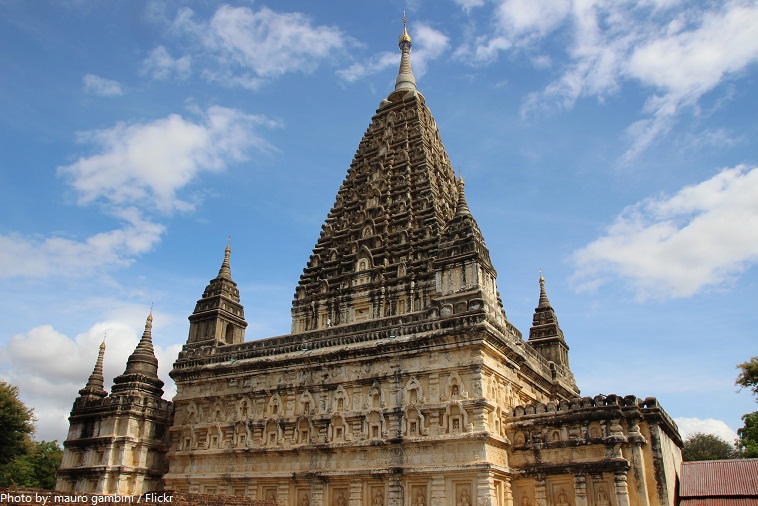
Shwezigon Pagoda was built as the most important reliquary shrine in Bagan. It is a prototype of Burmese stupas, and consists of a circular gold leaf-gilded stupa surrounded by smaller temples and shrines. Construction of the Shwezigon Pagoda began during the reign of King Anawrahta and was completed in 1102 AD, during the reign of King Kyansittha of the Pagan Dynasty.The pagoda is believed to enshrine several bones and hairs of the Buddha.
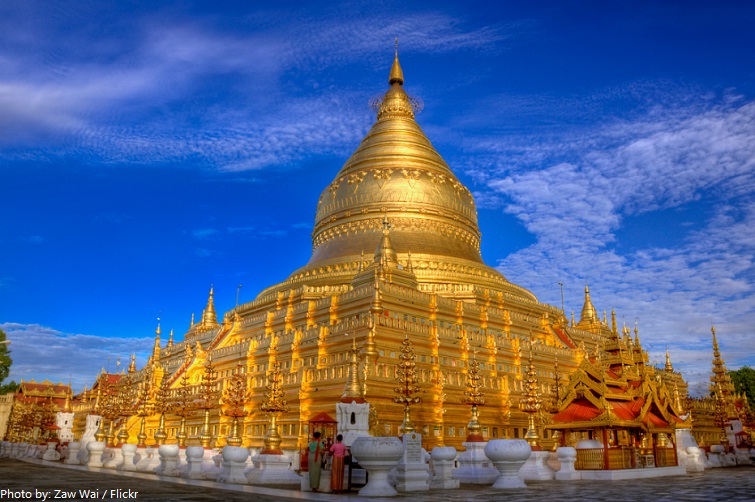
The large corpus of contemporary stone inscriptions have been the most reliable source for the history of the Kingdom.
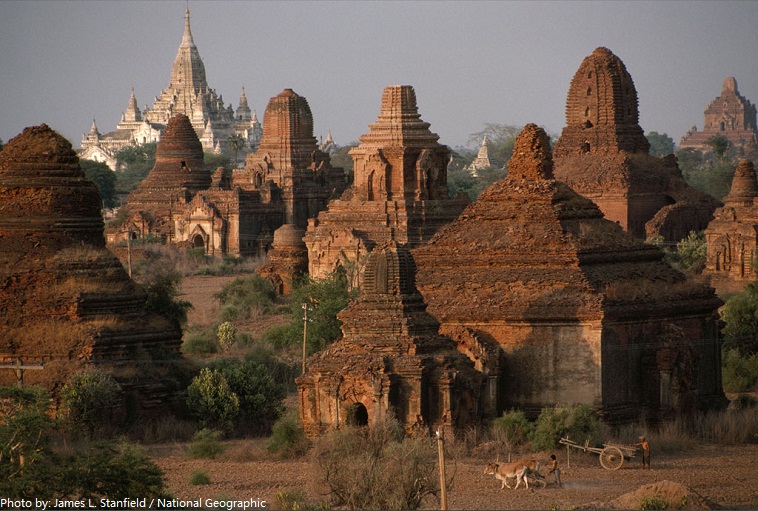
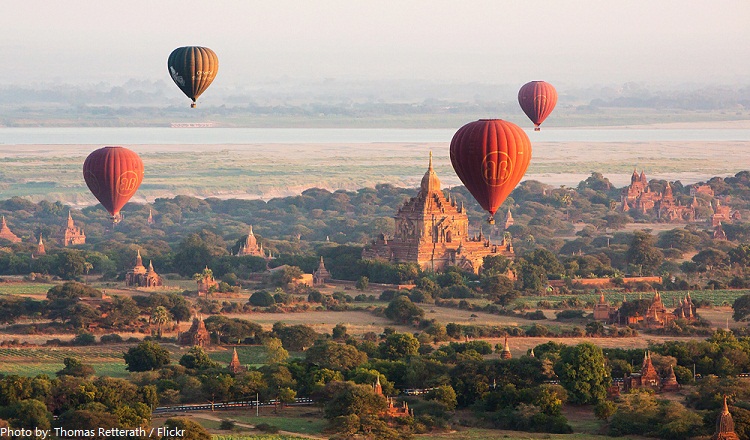
The best time to visit is between November and February, when temperatures hit 30ºC (86ºF). Avoid March to May, when temperatures can reach 43ºC (110ºF). Rainfall is highest in June and October.
Source :
Royalcitytravel.com
Wikipedia.com



















